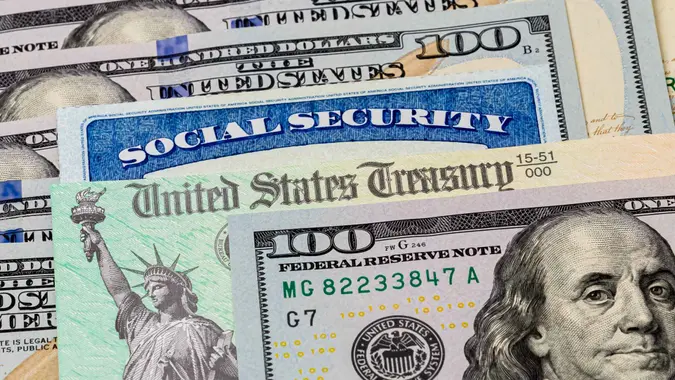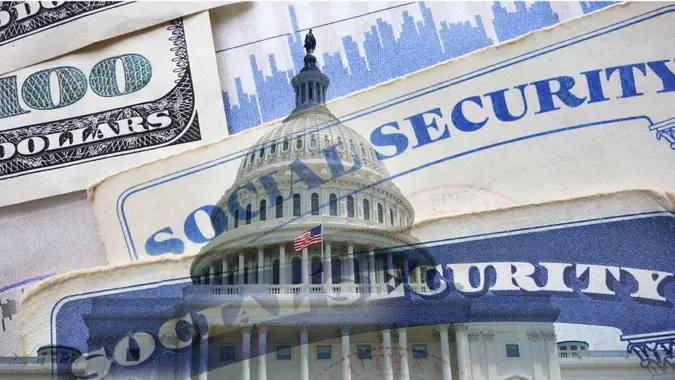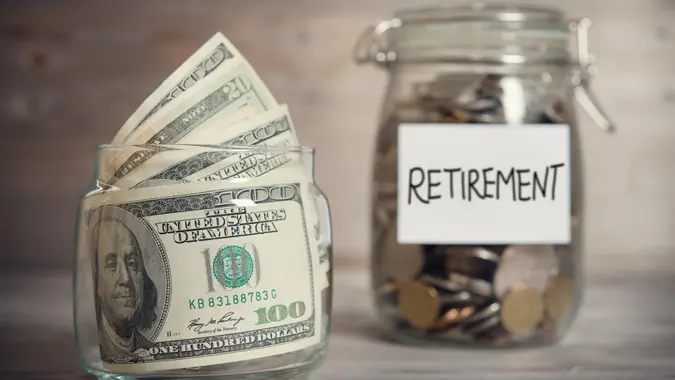Here’s How Much Cash Retirees Should Have on Hand, According To Experts

Commitment to Our Readers
GOBankingRates' editorial team is committed to bringing you unbiased reviews and information. We use data-driven methodologies to evaluate financial products and services - our reviews and ratings are not influenced by advertisers. You can read more about our editorial guidelines and our products and services review methodology.

20 Years
Helping You Live Richer

Reviewed
by Experts

Trusted by
Millions of Readers
By the time you’ve retired, you’ll hopefully have a portfolio of investments to help financially sustain you through retirement. But in addition to these investments, it’s important to have some cash on hand to cover living costs, emergency expenses, and other necessities.
Understanding how much cash to have not only ensures you can easily pay your expenses but is also essential in protecting those investments that you’ve worked so hard to build up.
Why Is it Important to Have Cash Available?
Though you may have plenty of money invested, it’s still important to keep enough cash on hand. Tyler Weerden, Financial Planner and Founder at Layered Financial, explained that not keeping enough cash on hand can negatively impact your investments.
“Cash is the oxygen in your financial life,” said Weerden. “You might take it for granted and not truly appreciate it until you’re underwater. Cash creates flexibility and options.”
Having a cash cushion can help your investments better weather a down market. “The returns of your investment portfolio in the years immediately before and after pulling the retirement pin are crucial,” Weerden explained. “Retiring into a down market and pulling money from your portfolio can substantially decrease your safe withdrawal rate for the remainder of your retirement.”
Weerden presented the following example to illustrate how having a cash cushion can help during and after a down market:
In October 2007, fictional retirees Jane and John each have a $1 million nest egg, allocated 60% U.S. Total Stock Market and 40% U.S. Total Bond Market. Jane has five years’ worth of spending in cash to ride out market volatility. John doesn’t see the need for cash, since it earns such low interest, and is withdrawing 4% of his portfolio, or $40,000, annually adjusted for inflation. John makes these withdrawals throughout the Global Financial Crisis, but Jane sees the market collapsing, stops her withdrawals, and lives off her cash instead.
By March 2009, John’s portfolio is down to $629,000, roughly a 37% loss. Jane’s portfolio is worth $693,000, roughly a 30% loss. By October 2010, the 60/40 portfolio is no longer underwater and has recovered from the financial crisis. But, since John made continued withdrawals, his October 31, 2010 balance is $875,782. Jane’s balance is $1,014,766. Jane’s cash cushion resulted in a portfolio balance that is $138,984 greater than John’s portfolio balance.
How Much Cash Should Retirees Have on Hand?
When determining how much cash to keep on hand, Weerden encourages retirees to consider the difference between their fixed income sources, like a pension, Social Security, and annuities, compared to their expenses.
For example, if a retiree has $5,000 in monthly expenses, and their fixed income sources cover $3,000 of those expenses, they have a $2,000 gap. “Once a retiree knows their monthly shortfall, they should set aside enough cash to cover that shortfall for three to five years’ worth,” said Weerden.
Whether you want to set aside three or five years of cash depends on your risk tolerance, risk capacity, personal preference, and asset allocation. “If the retiree has stable income sources that adjust with annual cost-of-living increases and they’re not spooked by market turmoil, they have a greater ability to weather volatility,” Weerden explained. In this scenario, a retiree might be more comfortable owning more stocks and having less cash set aside.
But if a retiree’s entire income comes from their investment portfolio or if they sell assets when the market is volatile, they have less capacity and tolerance. This retiree may not want to be as aggressive with their asset allocation and may want to set aside closer to five years’ worth of cash.
Is There a Formula to Calculate a Cash Cushion?
Stephen Kates, Principal Financial Analyst at RetireGuide.com, is a former wealth management advisor and has been a Certified Financial Planner since 2013. Kates uses a formula to create a general guideline for emergency funds at the start of retirement. The formula is based on the number of months of expenses that the retiree has on hand as a buffer. It is:
Number of months of expenses = 18 – (12 x G), where G is the ratio of guaranteed income to overall expenses.
If your guaranteed income, including your pension, Social Security, and annuities cover half of your annual income, then G = 0.5. Your formula will be:
Number of months of expenses = 18 – (12 x 0.5)
or
Number of months of expenses = 18 – 6
Therefore, according to the formula, you should keep 12 months of expenses on hand in cash when you retire.
How Does a Cash Cushion Vary Throughout Retirement?
Kates explained that you may want to adjust your cash cushion as you progress through retirement. When you first retire, you won’t completely know how your expenses might change. After a few years, you might find that you need more or less cash.
“This is where the variability of your expenses and your tolerance for risk come into play,” said Kates. “Late in retirement, you are less likely to be traveling or making as many spontaneous withdrawals, so you may be able to keep less cash on hand if you have a firm grasp on your monthly expenses.”
Should You Adjust Your Cash Cushion Based on Investments?
“The more risk you have in your portfolio, the more you may want to pad your emergency fund,” Kates explained. If a large portion of your investments are in a single stock or industry, it’s important to consider the logic of that portfolio, as well as how much of an additional cash cushion you might need if that stock temporarily or permanently loses value.
Weerden highlighted the importance of proper asset allocation. “If you don’t need to take additional risk, why take it?” he said. “A retiree with fixed income sources that cover their expenses can afford to take some risk with their portfolio, but they don’t need to take unnecessary risk.” Weerden encourages retirees to consider having enough inflation-fighting assets to sustain their portfolio while also minimizing downside risk.
Kates encouraged retirees to work with a trusted advisor, like a professional financial planner. A professional financial planner can help you outline your portfolio structure, plan your income, and shape your retirement strategy.
More From GOBankingRates
 Written by
Written by  Edited by
Edited by 
























